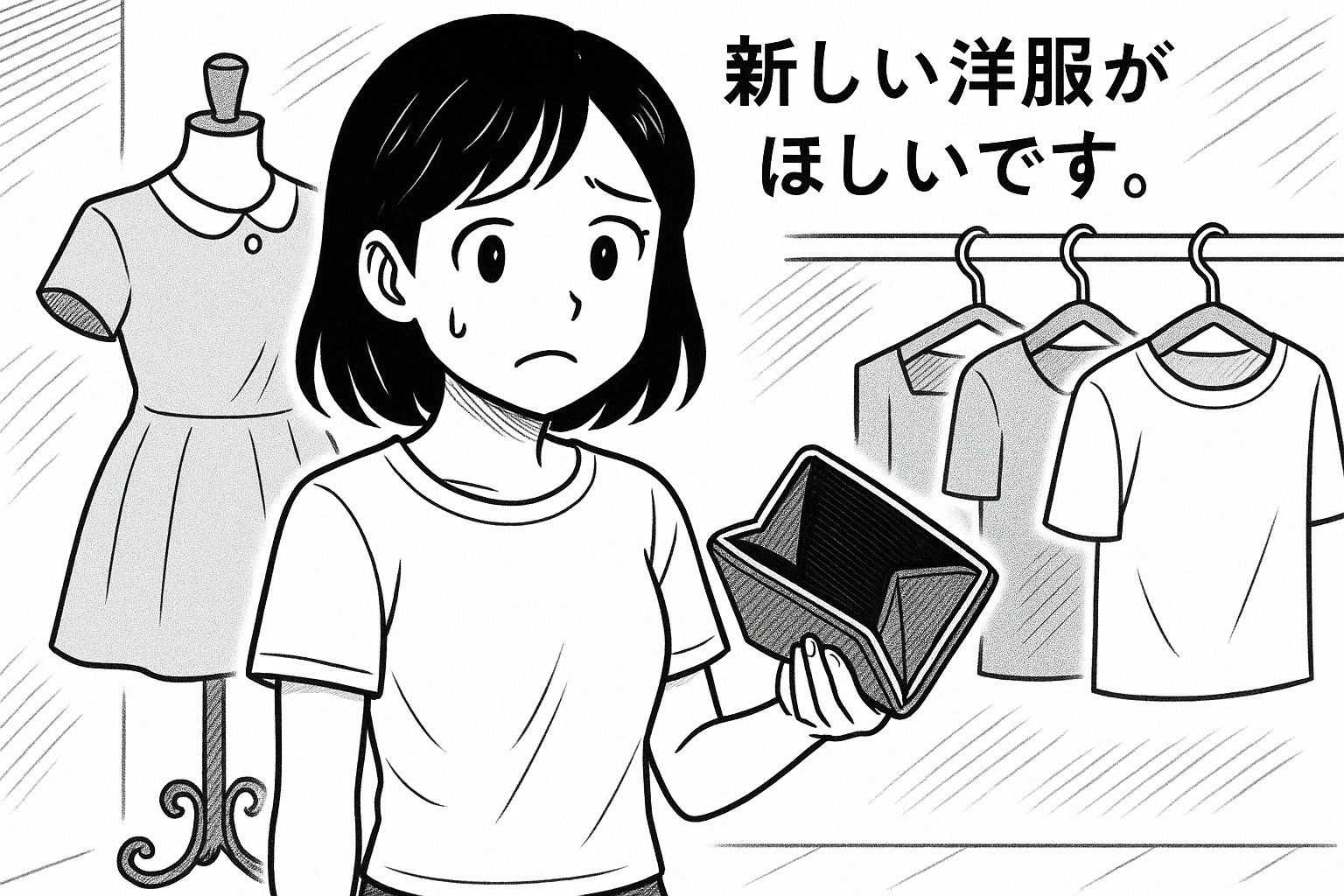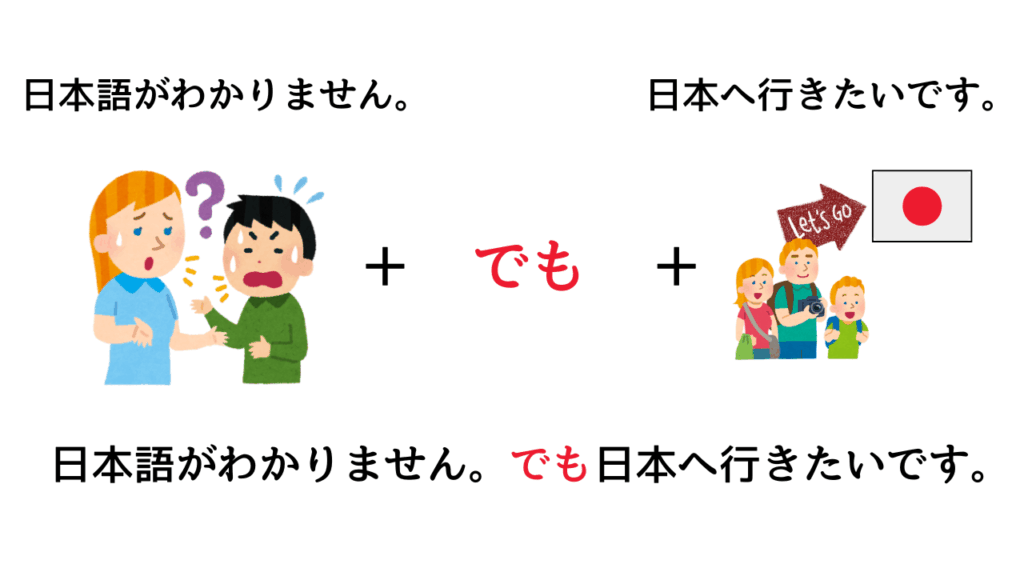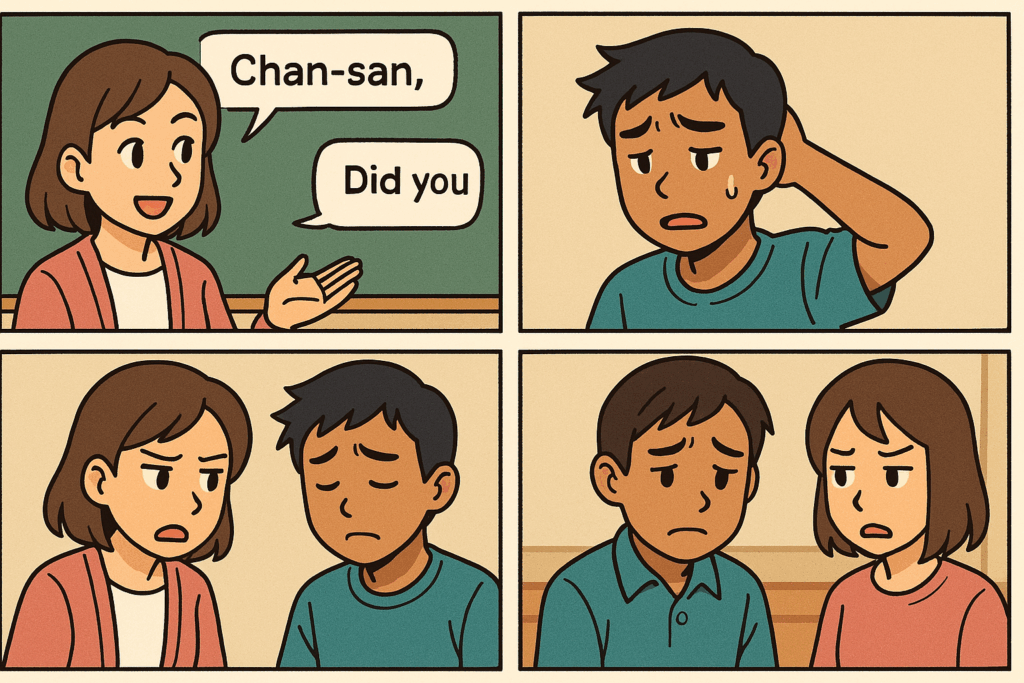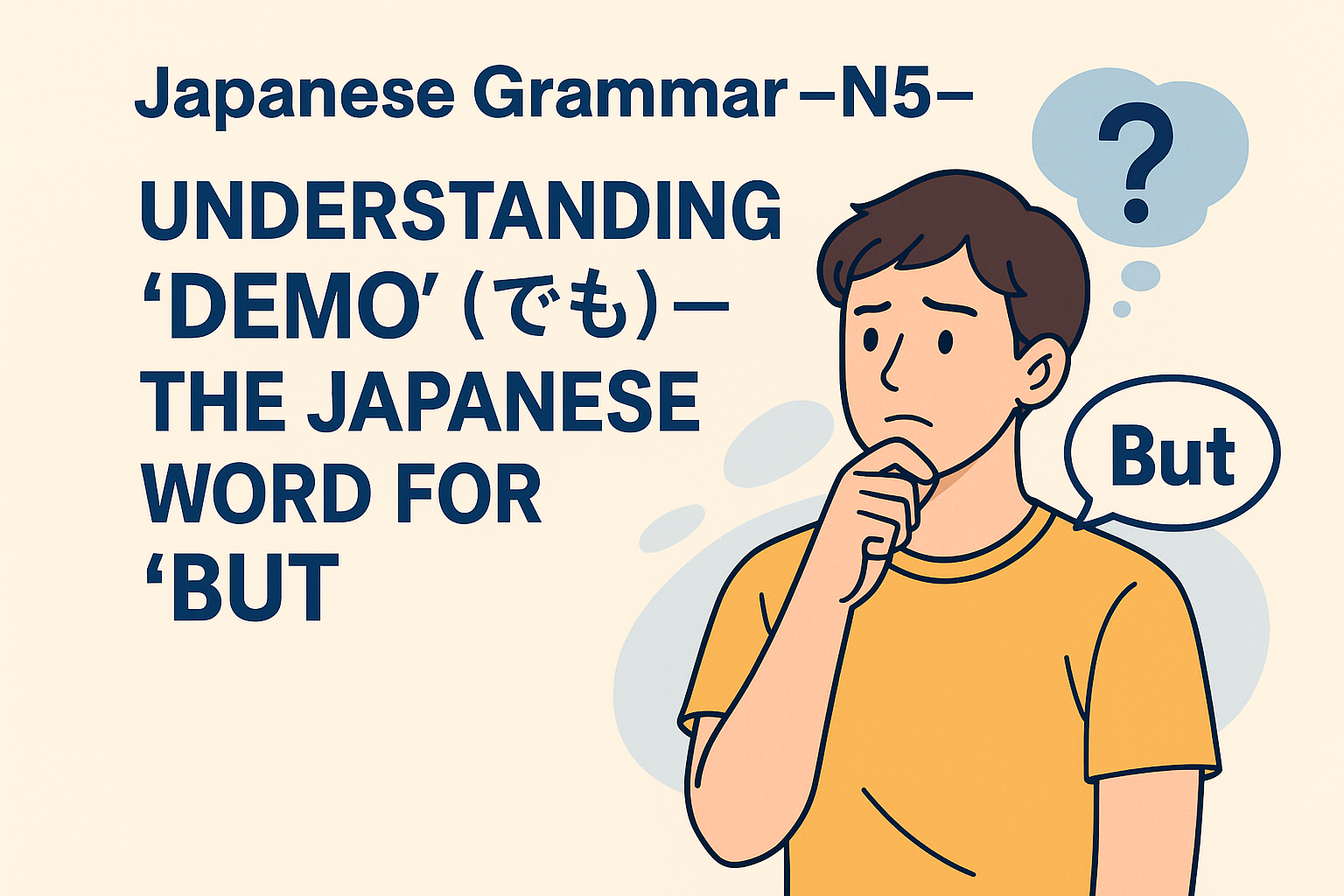でも
What Does “Demo” (でも) Mean?
Hello everyone studying Japanese! How’s your learning going?
Today, let’s learn the Japanese word “demo” (でも) together. This expression works like a conjunction and is used to show the relationship between two sentences.
So, what kind of relationship does it show?
It expresses a contrasting or unexpected relationship—basically the same as “but” or “however” in English.
Here are some examples:
Example 1)新しい洋服がほしいです。でもお金がありません。
I want new clothes. But I don’t have any money.
Example 2)友だちは日本語がわかりません。でも日本のアニメが好きです。
My friend doesn’t understand Japanese. But they love Japanese anime.
And also, “demo” is used a lot in casual, everyday conversations.
Because it’s more of a spoken expression, it’s not usually used in very formal situations or in written language.

Sentence Structure: How to Say “But” in Japanese
The sentence structure for “demo” (でも) is super simple.
All you have to do is put “demo” between the first sentence and the second sentence.
For example, if you want to say “I don’t understand Japanese, but I want to go to Japan,”
your first sentence is 日本語がわかりません。(I don’t understand Japanese.)
and your second sentence is 日本へ行きたいです。(I want to go to Japan.)
Just insert でも between them:
日本語がわかりません。でも日本へ行きたいです。
That’s it! Super easy, right?

Examples in Daily Life
田中さん:スミスさん、日本の夏はどうですか。
スミスさん:とてもあついですね。でもなれてきましたよ。
田中さん:そうですか。体に気をつけてくださいね。
Tanaka: Smith-san, how’s the summer in Japan treating you?
Smith: It’s really hot! But I’m getting used to it.
Tanaka: I see. Please take care of yourself, okay?

先生:チャンさん、しゅくだいをしましたか。
チャンさん:はい。でもいえにわすれてきてしまいました。
先生:それはよくありませんね。
Teacher: Chan-san, did you do your homework?
Chan: Yes, I did. But I accidentally left it at home…
Teacher: That’s not good, you know.

You Did It! Now You Can Use “Demo” with Confidence
Great job! You’ve just learned one of the most useful little words in Japanese: “demo” (でも). It may look simple, but being able to connect two ideas with “but” is a huge step toward sounding more natural and confident in everyday conversations.
Now you can talk about contrasts, express your true feelings, and share more detailed thoughts—all using just one word. That’s real progress!
Remember, the best way to get comfortable with “demo” is to use it often. Try it in your homework, conversations, and even when you think to yourself in Japanese. The more you use it, the more natural it will feel.
You’re doing amazing—keep going, and Japanese will become smoother and more fun day by day!
For Japanese Teachers
In this lesson, we introduced “demo” (でも) as one of the basic conjunctive expressions used to indicate contrast in Japanese. For most learners, this grammar point is relatively accessible, and its meaning is often not too difficult for instructors to introduce.
However, based on my own teaching experience, a common issue arises when students understand the meaning and usage, yet still struggle to form contrastive expressions in Japanese. This difficulty often comes from trying to construct such relationships in a language they are not yet fully comfortable using. Since I incorporate the indirect method in my classes, I sometimes translate students’ incorrect sentences into their native language to show that the contrast is not being expressed. In a strictly direct-method environment, however, it may be necessary to prepare alternative strategies for addressing this issue.
In addition, depending on the curriculum, “demo” may also be the learners’ first exposure to complex sentence structures. Some students may not yet be accustomed to producing longer utterances in Japanese, which can make fluency and articulation challenging.


